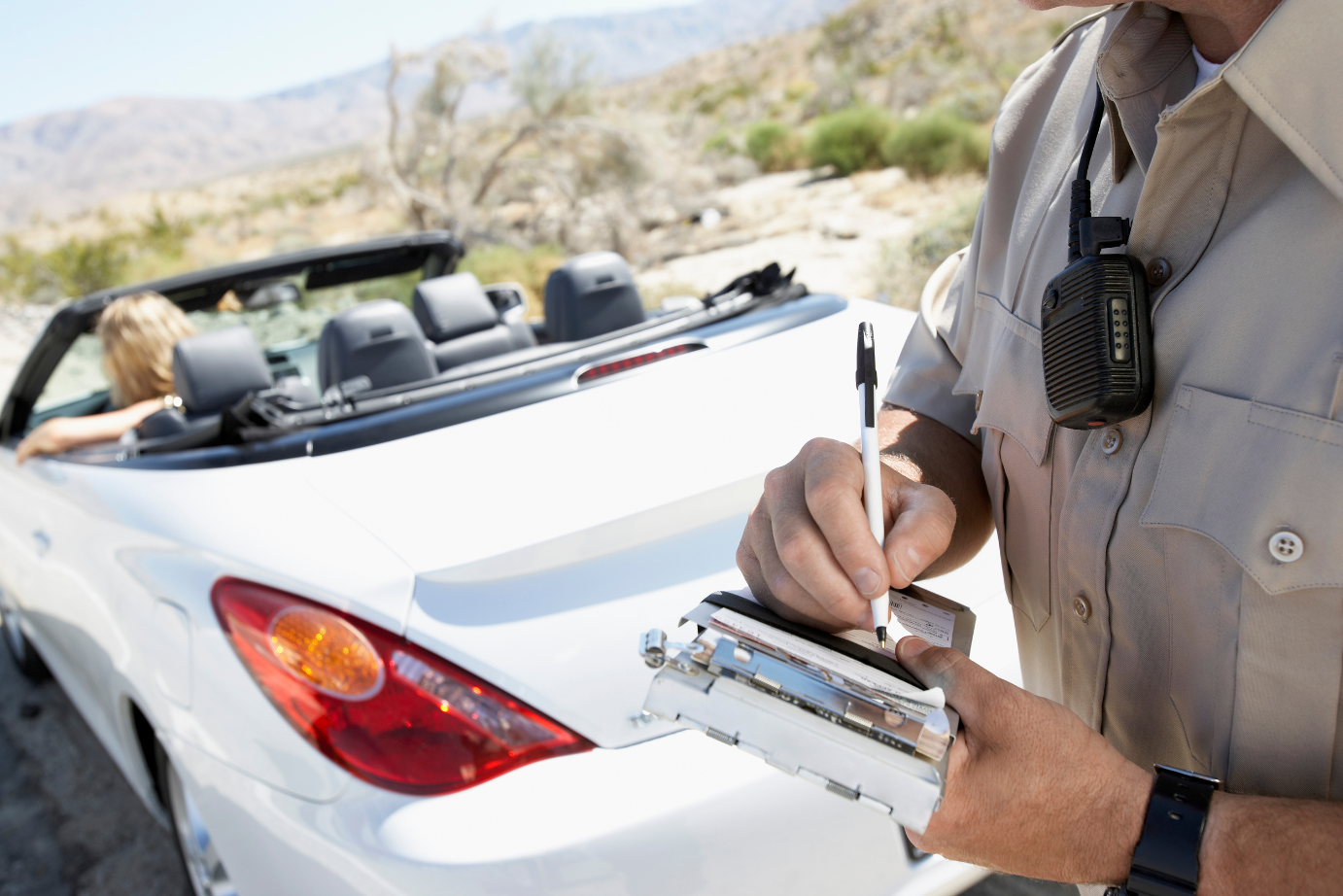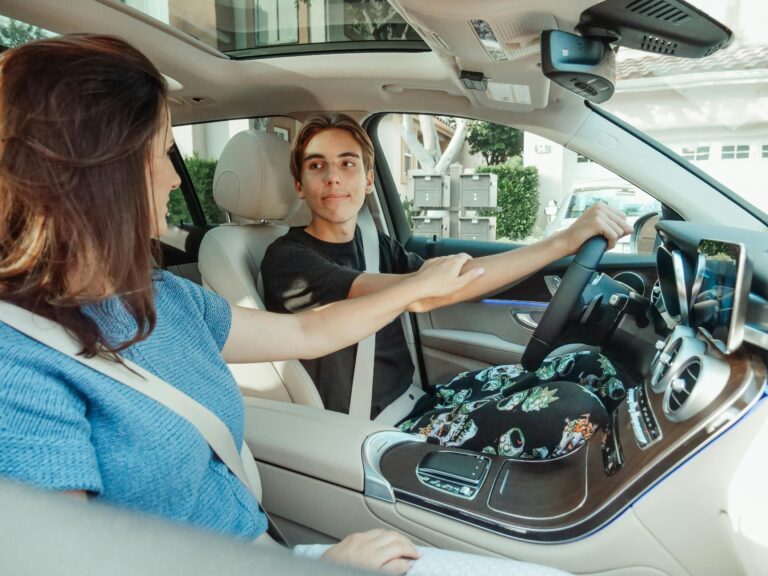
Speeding and Reckless Driving
Educating drivers about speeding and reckless driving can help reduce crashes and guide them to make safer choices. Teaching drivers about road safety is key. Covering topics like drowsy driving,

Educating students about the importance of safe driving habits is a valuable part of driving safety. Teaching about the dangers of speeding, distracted driving, and impaired driving are vital to an all-encompassing course on driving safety. Let’s take a look at the dangers of speeding and educational tools and resources to support driving education programs.
When working with students, talking about the dangers of speeding may include statistics on speeding-related crashes, consequences of speeding, and the impact of speeding on road safety. Other topics may include covering the effect of speeding on reaction time and how technology can reduce speeding. Using hands-on tools and driving simulators like the Roadster Pedal Kart or Simulated Impaired Driving Experience (SIDNE) are great ways to help students and new drivers remember the lessons taught.
There are many factors students may face while driving that can contribute to their decision to speed, including:
Ask students what may contribute to them engaging in speeding, and work to brainstorm solutions that mitigate these factors.
Covering the legal consequences of speeding, like speeding tickets, local laws, and how laws may differ by state, can help them realize the consequences of unsafe or risky behavior. Consider discussing how speed limits reduce fatalities and why it’s important that the limits are enforced.
Sustainability and eco-friendly habits are a great topic for students and young adults. Discuss the impact of speeding on the environment, like increased greenhouse gas emissions, air pollution, and how reduced speed can limit your carbon footprint. According to the U.S. Department of Energy, gas mileage typically decreases rapidly at speeds above 50 mph, and aggressive driving like speeding can lower fuel economy by 15% to 30% on the highway. This inefficiency directly translates into higher emissions of greenhouse gases like carbon dioxide and other air pollutants that contribute to smog. The environmental damage also impacts wildlife and ecosystems; higher speeds drastically reduce a driver’s reaction time and increase a vehicle’s stopping distance, leading to a greater number of fatal wildlife collisions.
Understanding risky behaviors may help students understand the negative outcomes of speeding. These behaviors may include:
Discuss the factors and reasons behind these behaviors and de-escalation tactics when they’re behind the wheel to avoid these situations entirely.
Education plays an important role in reducing speeding among teen drivers. Programs like Reduce Teen Crashes have shown that providing young drivers with comprehensive information and resources before they get behind the wheel can lead to a decrease in speeding-related crashes. Effective driver education presents information in an engaging manner, utilizing credible sources such as the CDC to reinforce the risks associated with speeding. Incorporating personal narratives from individuals affected by speeding-related crashes can also make the consequences more tangible for learners.
To enhance the impact of these educational efforts, integrating interactive tools and technology can be highly beneficial. Explore products designed to provide hands-on learning experiences, like the “Reduce Teen Crashes” program, Fatal Vision® Drowsy and Distracted Goggles that simulate the impairing effects of fatigue and distraction, and educational speeding banners and posters. Integrating these resources into a speeding program can have a lasting impact in young drivers.
In addition to educating on impaired driving, it’s key to incorporate the relationship of impaired driving to speeding in the dangers of speeding course. Use hands-on learning tools, like the Fatal Vision Alcohol or THC Goggles, to show the dangers of impaired driving. Then build on the experience by discussing the relationship of speeding and impairment, like the increased risk of crashes when combining multiple unsafe, risky behaviors.
When educating students on the dangers of speeding, consider talking about additional risk factors of speeding that can result in crashes. Poor weather conditions, poor roads, distractions, and other factors may increase the risk of accidents. Talk with your students about the extra cautions they should take when conditions are less than perfect, and brainstorm ways for them to keep their eyes focused on the road and maintain good driving habits.
It’s key to give students other options when talking about reducing speeding. Consider brainstorming other alternatives, like using public transportation, carpooling and holding each other accountable to good driving habits, using cruise control in mindful ways, and more. Talk about the pros and cons of automated speed enforcement measures.
Talk with your students or new drivers about breaking speeding habits, and what mindful driving may look like. Cover the positives and benefits of traveling at a safe speed, and how self-control is important in speed regulation. Consider using reminders like banners and posters to keep the message top-of-mind.
Creating a full educational course on the dangers of speeding can be incredibly in-depth. Ensuring your new drivers have all of the information, tools, and resources to make healthier choices is key to long-term success. Incorporate Fatal Vision hands-on learning tools to help the message stick. Explore products like Speeding Awareness Tools, SIDNE Driving Simulators, Drowsy & Distracted Driving Goggles, and much more. Reach out to our expert team for questions or get a quote today.
Innocorp is the pioneering developer of Fatal Vision® Goggles and other experiential learning tools designed to educate on the dangers of impairment and promote risk prevention. Innocorp provides impactful, hands-on resources used globally by law enforcement, educators, and safety professionals to demonstrate the consequences of substance use, risky driving, and other dangerous behaviors.
We’d love to online chat! We are available Monday-Friday from 8am-5pm (CST):
Or schedule a time for a consultation:

Educating drivers about speeding and reckless driving can help reduce crashes and guide them to make safer choices. Teaching drivers about road safety is key. Covering topics like drowsy driving,

The dangers of speeding are important to discuss in a teen or student driver education program; here are a few tips on what and how to cover this topic.